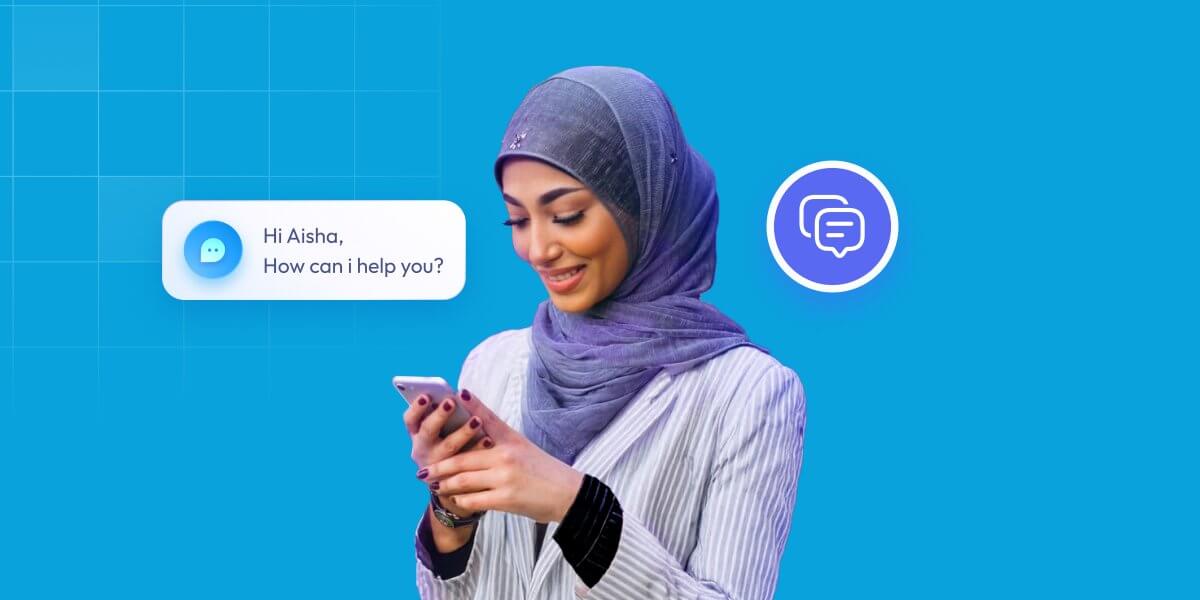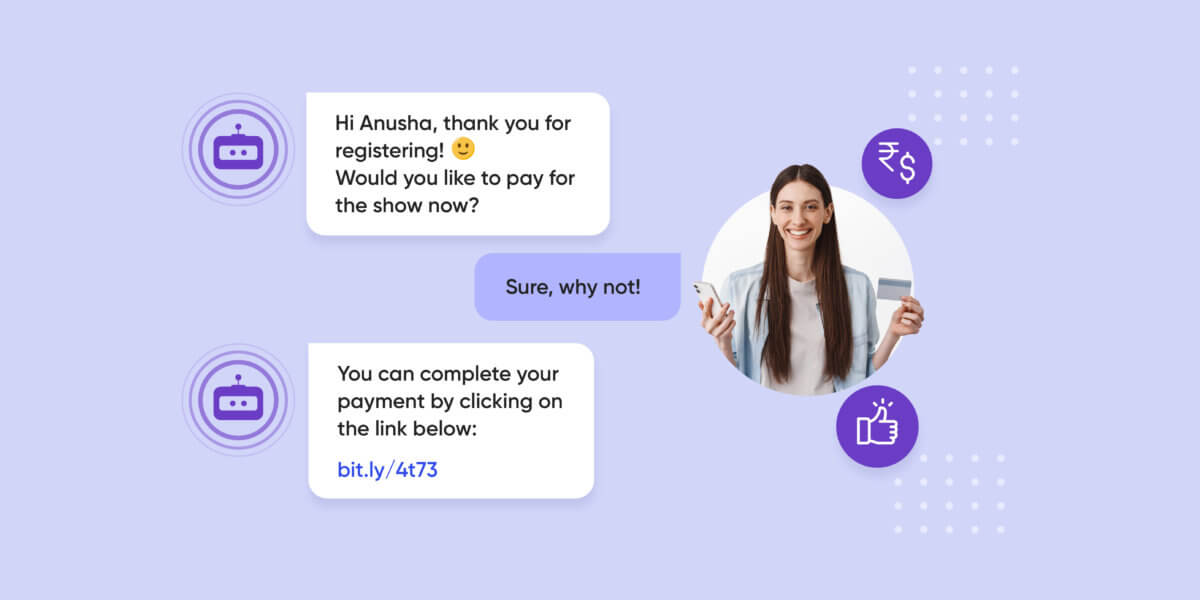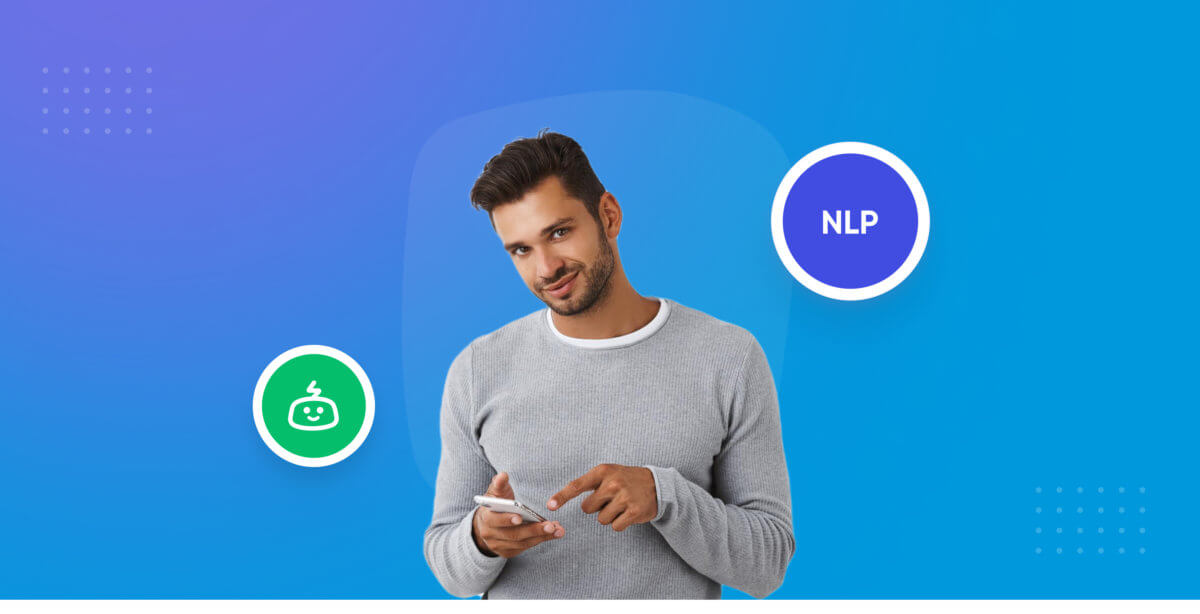How to Build an AI Chatbot in Arabic?
- October 23rd, 2024 / 7 Mins read
-
Namrata Narsinghani

How to Build an AI Chatbot in Arabic?
- October 23rd, 2024 / 7 Mins read
-
Namrata Narsinghani
(كيف يمكننى عمل مجيب الى باللغة العربية باستخدام الذكاء الاصطناعي)
Arabic is a language rich in culture, history, and nuance, spoken by over 1.422 billion people across 22 countries, including powerhouses like the United Arab Emirates, Egypt, and Saudi Arabia. If your brand wants to tap into the Middle East and North African markets, you need more than just a “universal translator” – you need to speak the local language, literally and figuratively.
Delivering personalised support to this wide group of customers, that actually can connect, is the key for any brand looking to establish themselves in these countries. Chatbot, one of the fastest growing solutions, has the ability to connect with customers in this but it shortfalls because Arabic though one language has at least over 30 dialects. The formal written Arabic (Modern Standard Arabic, or MSA) might get you through a press conference, but it’s not what most people use when chatting casually.
Whether it’s the Levantine dialect spoken in Lebanon or Egyptian Arabic, each region has its own unique way of communicating. You wouldn’t want to ask for directions in Morocco using the Syrian dialect – it could get confusing fast!
This is where the new wave generative AI-powered AI agents are taking over, by actually learning from conversation and delivering the support to customers in the tone, language and sentiment they prefer.
But before we can give you a walkthrough of how you can go about enabling the same support for your arabic speaking customers by building a chatbot with a zero effort from your end, let’s understand why is it difficult to build an arabic chatbot.
Challenges of Building an Arabic Chatbot
Creating an AI chatbot in Arabic is like solving a Rubik’s Cube where each side speaks a different dialect. It’s not just about translating your English chatbot script word for word – it’s about understanding the complex linguistic and cultural landscape of the Arabic language.
1. Dialect Diversity
As mentioned earlier, Arabic has over 30 dialects, and while Modern Standard Arabic (MSA) might work in formal settings, it won’t fly in casual conversations. If your chatbot speaks in MSA while your customer is using Moroccan Arabic, your brand may come off as distant or robotic. The challenge lies in building a chatbot that can switch between these dialects fluidly, without sounding like a tourist reading from a phrasebook.
2. Right-to-Left Script
Another unique challenge is the Arabic script itself. Arabic is written from right to left, which can throw a wrench into the usual chatbot interface. Your AI needs to handle this script properly – no flipping characters or breaking sentence flow. Presentation matters, and misaligned text can give customers the impression that the bot isn’t built for them.
3. Context and Sentiment
Arabic is a highly contextual language. A single word can have different meanings depending on tone, formality, or even geographic location. For example, the word “Habibi” can mean “my dear” in a friendly context, but could also be used sarcastically. Your chatbot has to grasp these nuances, not just responding to what’s said, but how it’s said. Sentiment analysis becomes crucial here, especially when customers express frustration or dissatisfaction.
4. Arabic Variants in Tech Terminology
Some modern technical terms don’t have widely accepted Arabic equivalents, and people tend to switch between Arabic and English in the same sentence. For instance, in Egypt, someone might say, “I need a new router or انا احتاج راوتر جديد” but the rest of the sentence will be in Arabic. Your chatbot must seamlessly handle these code-switching scenarios to avoid jarring the user experience.
The Path to Arabic Support with Arabic AI Chatbot
بناء مجيب الى معتمد على الذكاء الاصطناعي
So how do you build an Arabic chatbot that tackles these challenges without needing a PhD in linguistics? Generative AI is the answer.
These bots can now take on the task of learning language variations and dialects from a wide set of data points. It’s like giving your bot an all-access pass to the Arabic language, complete with shortcuts for navigating regional quirks.
1. Training in Local Data
To ensure your chatbot speaks the right version of Arabic, it needs to be trained on a diverse dataset. This means incorporating conversations from across the Middle East and North Africa, ensuring your bot can handle Lebanese Arabic, Egyptian slang, and even Gulf region expressions, all while keeping the local culture and context in mind. Verloop.io’s ML and LLM model are trained over 20+ dialects to ensure a contextual conversation flow with your customers.
2. Natural Language Understanding (NLU)
Chatbots built with advanced NLU can better understand and process Arabic’s complex grammatical structures, dialects, and sentiment. This means your bot won’t just translate a phrase, but it will understand it, enabling smoother conversations that feel natural.
3. Generative AI for Contextual Responses
Generative AI can help you build a chatbot that not only understands Arabic but adapts to each user’s unique way of speaking. These bots learn from ongoing interactions and get smarter over time, meaning they can respond in the local dialect with the correct sentiment. This is a huge leap from traditional rule-based chatbots, which often fall short in delivering a natural conversational experience.
4. AnswerFlow for Real-Time Solutions
To truly enhance the experience, tools like AnswerFlow by Verloop.io step in by leveraging document cognition. This feature allows chatbots to generate accurate, real-time responses based on document data, helping them meet SLAs without requiring agents to dig through databases. It’s a lifesaver for maintaining conversational flow and keeping customers happy.
So, the next time your chatbot faces a tough question about a product warranty, it can fetch the correct answer from the company’s knowledge base instantly and in the right dialect. This efficiency not only satisfies customers, but also gives your team more time to focus on complex tasks.
Building an Arabic Chatbot with Verloop.io No-Code Conversational AI Solution
مع فيرلووب يمكنك بناء مجيب الى يستخدم الذكاء الاصطناعي فالرد على استفسارات العملاء
Verloop.io offers two modes of building a chatbot on our conversational AI dashboard. One where you can build AI chatbots and the other where you can build generative AI powered AI agents.
Verloop.io No Code Chatbot
Verloop.io does not follow the traditional chatbot translation method, which can lead to a lot of errors. On Verloop.io dashboard you can select the language and then build the recipe by simply dragging the conversation building block for asking questions, sending a message, adding images, enabling payment, carousal and more.
Based on the dialect, you can add the conversation pointers, so no hassle of any errors in conversation flow.
Suggested reading: Shifting from Code-Based to No-Code Conversational AI Solutions
AI Agents
Gone are the days when building a chatbot felt like assembling IKEA furniture without the manual. With the power of AI agents, creating a seamless bot conversation is now as easy as writing a few simple prompts.
Let’s say you want your chatbot to help customers navigate through a refund request. In the past, you’d have to meticulously design conversation flows, pre-define all the possible responses, and still risk missing a few crucial customer intents. Now, with Generative AI and the Verloop.io model, all that heavy lifting is done for you. Here’s how it works:
You start by writing basic prompts like, “Help the customer with a refund” or “Assist with a shipping query.” The AI then takes over, detecting the underlying intent behind these commands and crafting a complete, conversational flow that makes sense in real-time. No coding, no complicated workflows—just a few words, and your bot is ready to handle conversations.
But what makes this next-gen approach even more powerful is how the AI adapts to your customers’ preferences. Thanks to Natural Language Processing (NLP) and Natural Language Understanding (NLU), it doesn’t just pick up on the keywords; it understands the tone, sentiment, and even the dialect your customers are using. If someone from the Gulf region asks about a product in Khaleeji Arabic, your chatbot will respond appropriately, and if a customer in Egypt uses a different slang, the bot adjusts its tone and vocabulary to match.
It’s like having a multilingual customer service agent who doesn’t just speak the language but mirrors the customer’s communication style.
Verloop.io Arabic Chatbot Examples
When it comes to building an effective AI-powered chatbot, language is just one part of the puzzle. The real challenge—and opportunity—lies in connecting with customers through their specific dialects. Arabic, as we know, is a language rich in variation. Each region brings its own unique flair, from the conversational tones of Egypt to the formal structures in the UAE. And this is where generative AI shines, by enabling brands to engage with their customers in ways that feel authentic and relatable.
Let’s look at how Verloop.io is helping businesses in the MENA region do just that:
Globemed Egypt
In Egypt, customer service isn’t just about solving problems; it’s about building a relationship through familiarity and trust. For Globemed Egypt, a leading healthcare management company, this meant ensuring their chatbot could converse in the local Egyptian Arabic dialect. Egyptian Arabic is known for its casual tone and distinctive phrases, which can easily get lost if you’re using a more formal approach.
By leveraging Verloop.io’s AI model, Globemed was able to craft a chatbot experience that sounded like it was speaking directly from the bustling streets of Cairo. The result?
A dramatic improvement in customer engagement. With a bot that truly “spoke their language,” customers felt understood, which translated into faster query resolutions and more positive interactions.
Not only did this improve Globemed’s response times, but it also led to higher customer satisfaction rates, as users were able to get the help they needed in the dialect they were most comfortable with.
Watania Takaful
Over in Dubai, Watania Takaful, an insurance company, faced a similar challenge. The Emirati market speaks Khaleeji Arabic, a dialect unique to the Gulf region that blends traditional Arabic with modern slang. For a company dealing in something as critical as insurance, ensuring their chatbot was able to respond with the right level of formality and regional vocabulary was key.
Verloop.io’s AI-enabled chatbot not only recognised the nuances in Khaleeji Arabic but also adapted to the cultural preferences of Dubai’s customers. The AI could switch between a professional tone for more formal queries and a relaxed conversational style for everyday questions. This flexibility helped Watania improve their response times by 40%, leading to faster claims processing and fewer escalations to human agents.
ADIB
For ADIB, a leading Islamic bank based in the UAE, communicating with their Emirati audience in a way that aligned with both language and cultural nuances was non-negotiable. Their chatbot, powered by Verloop.io, was designed to not only understand the Emirati dialect but also mirror the polite, respectful tone expected in financial interactions.
The chatbot’s ability to seamlessly handle everything from basic inquiries to complex banking transactions in Emirati Arabic created a more trustworthy experience for customers. In the financial sector, trust is everything, and this approach helped ADIB reduce customer effort by 30%, as queries were resolved more efficiently. The bank also saw a noticeable reduction in the need for human escalation, freeing up resources for more strategic tasks.
The Impact of Language and Dialect
What these case studies tell us is clear: success in customer support doesn’t just hinge on having a chatbot—it’s about having a chatbot that speaks your customers’ language, and more importantly, their dialect. From Globemed Egypt’s casual tone to Watania Takaful’s blend of professionalism and local slang and ADIB’s polite, formal Emirati Arabic, Verloop.io’s AI chatbots have consistently delivered results by making conversations feel personal.
Each of these companies saw marked improvements in response times, customer satisfaction, and even resource allocation. Whether it’s helping customers navigate health insurance claims or making banking transactions smoother, the ability to speak directly to your customer in their own dialect transforms not just the conversation but the entire service experience.
In a region as linguistically diverse as the Middle East, Verloop.io ensures that you’re not just speaking Arabic—you’re speaking their Arabic.
Ready to transform your customer experience?
Or should I say:
“هل انت مستعد لتغير ادارة خدمة عملائك الى الافضل ؟”






